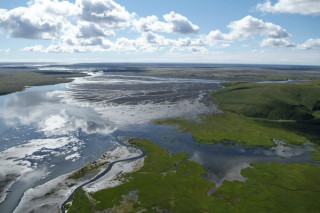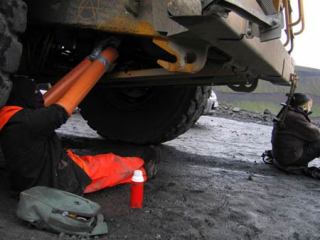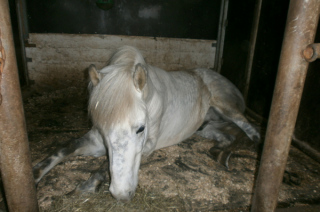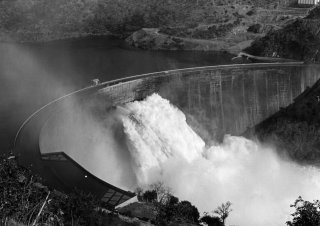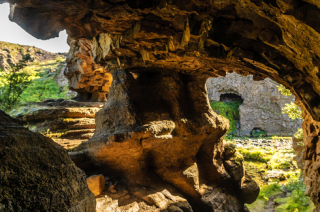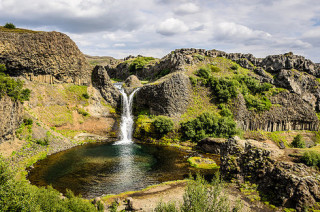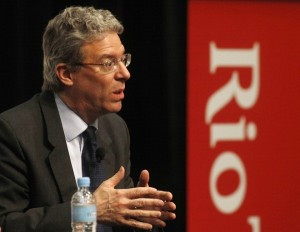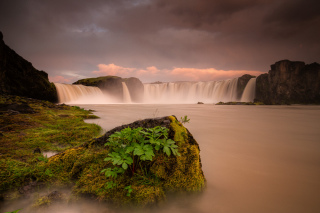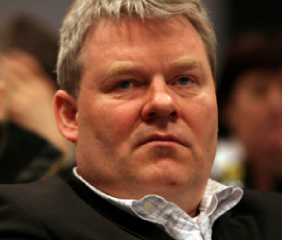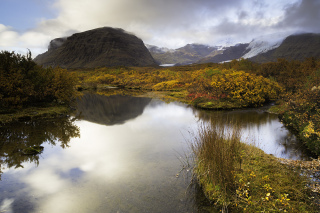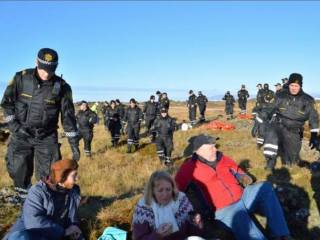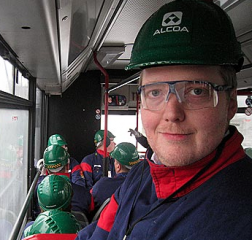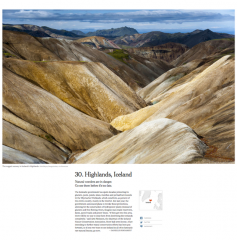Dec 05 2014
1 Comment
Majority Pushes For Eight New Hydro Power Plant Options
Proposal and lack of due process called “unlawful” and “declaration of war”
Last week’s Thursday, the majority of Alþingi’s Industrial Affairs Committee (AIAC) announced its intention to to re-categorize eight sites as “utilizable” options for the construction of hydroelectric power plants. These have until now been categorized, either as for preservation, or as on “standby”. These are categories defined by the Master Plan for nature conservation and utilization of energy resources, as bound by law. The re-categorization would serve as the first legal step towards potential construction.
The proposal had neither been announced on the committee’s schedule, before its introduction, nor introduced in writing beforehand. The committee’s majority gave interested parties a week’s notice to submit comments on the proposal, which is admittedly faster than we managed to report on it.
Reasoning
When asked, by Vísir, why the proposal was made with such haste, without any prior process in the committee or an open, public debate, Jón Gunnarsson, chair of the committee on behalf of the Independence party, replied that “it is simply about time to express the majority’s intention to increase the number of options for utilization.”
The proposal is in accordance with statements made by the Minister of Industry, Ragnheiður Elín Árnadóttir, at Landsvirkjun’s autumn meeting earlier that week, as reported by Kjarninn. In her speech at the occasion the Minister said: “I will speak frankly. I think it is urgent that we move on to new options for energy development, in addition to our current electricity production, whether that is in hydropower, geothermal or wind power. I think there are valid resons to re-categorize more power plant options as utilizable.”
Opposition
As the proposal was introduced to Alþingi, members of the opposition rose against the plans.
Róbert Marshall, Alþingi member in opposition on behalf of Bright Future, has called the lack of process “deadly serious” and “a war declaration against the preservation of nature in the country”. Steingrímur J. Sigfússon, the Left-Greens’ former Financial Minister, concurred, calling the proposal the end of peace over the topic, as did the former Environmental Minister on behalf of the Left-Greens, Svandís Svavarsdóttir, who called the proposal “a determined declaration of war”. Katrín Júlíusdóttir, former Minister of Industry, on behalf of the Social-Democrats’ Coalition commented that the proposal was obviously not a “private jest” of the committee’s chair, but clearly orchestrated by the government as such.
Lilja Rafney Magnúsdóttir, the Left-Greens’ representative in AIAC, and the committee’s vice chair, condemned the proposal. According to her, Minister of the Environment, Sigurður Ingi Jóhannsson, specifically requested fast proposals on these eight options. She says that she considered the data available on all options to be insufficient, except for the potential plant at Hvammur.
That same Thursday, the Icelandic Environment Association (Landvernd), released a statement, opposing the proposal. According to Landvernd’s statement, five of the eight options have were not processed in accordance with law. Landvernd says that the proposal “constitutes a serious breach of attempts to reach a consensus over the utilization of the country’s energy resources.” It furthermore claims that the AIAC’s majority thereby goes against the Master Plan’s intention and main goals.
Landsvernd’s board says that if Alþingi agrees on the proposal, any and all decisions deriving thereof will “constitute a legal offense and should be considered null and void”. Guðmundur Ingi Guðbrandsson, Landvernd’s manager, has since stated that if the plans will proceed, the high lands of Iceland will become a completely different sort of place.
The Iceland Nature Conservation Association (INCA) also opposes the plans. The association released a statement, pointing out that if current ministers or members of Alþingi oppose the Master Plan legislation, they must propose an amendment to the law, but, until then, adhere to law as it is.
The options
Mid-October, Environmental Minister Sigurður Ingi Jóhannsson already proposed re-categorizing one of the eight areas, “the plant option in Hvammur”, as utilizable. This was in accordance with proposals made by AIAC last March. Leaders of the parties in opposition then objected to the decision-making process, saying that such proposals should be processed by Alþingi’s Environmental Committee before being put to vote. The Hvammar plant would produce 20 MW of power.
The other seven options to be re-catogorized are: the lagoon Hágöngulón (two options, totalling 135 MW); Skrokkalda, also related to Hágöngulón (45 MW); the river Hólmsá by Atley (65 MW); lake Hagavatn (20 MW), the waterfall Urriðafoss (140 MW); and Holt (57 MW).
The last two, as well as the plant at Hvammur, would all harvest the river Þjórsá, the country’s longest river. The eight options total at 555 MW.
Backstory: Kárahnjúkar
The latest power plant construction in Iceland took place at Kárahnjúkar. The 690 MW hydropower plant at Kárahnjúkar is the largest of its type in Europe. It fuels Alcoa’s aluminum smelter in Reyðarfjörður. The largest power plant in the country before Kárahnjúkar, was the Búrfell hydropower plant, on-line since 1969, at 270 MW. The Icelandic government and the national power company Landsvirkjun committed to the dam’s construction in 2002, which was concluded in 2008. The total cost of the construction was around USD 1.3 billion. The largest contractor was the Italian firm Impregilo. The construction was heavily contested, for its environmental and economic effects, for the treatment of the workers involved and for a lack of transparency and accountability during the prior decision- and policy-making process.
At least four workers were killed in accidents on site, and scores were injured. “I have worked on dam projects all over the world and no-one has even been killed on any of the schemes. To have this number of incidents on a site is not usual,” commented International Commission on Large Dams (ICOLD) vice president Dr Andy Hughes at the time.
During the construction, the country saw new kinds of protest actions, involving civil disobedience and direct action, led by the organization Saving Iceland. Andri Snær Magnason’s 2006 book Draumalandið – The Dream Land – contesting Iceland’s energy policies, and calling for a reinvigorated environmentalism, became a bestseller at the time. Ómar Ragnarsson, a beloved entertainer and TV journalist for decades, resigned from his work at State broadcaster RÚV to focus on documenting the environmental effects of the Kárahnjúkar plant and campaigning against further construction on that scale. Read More
